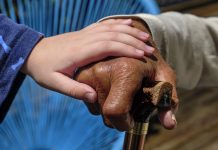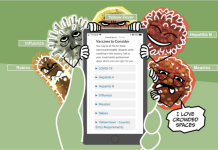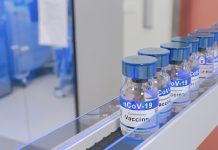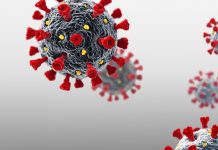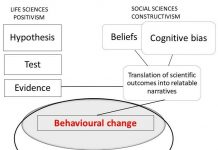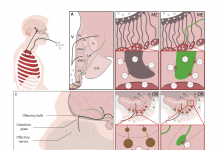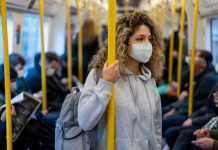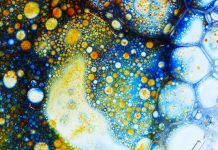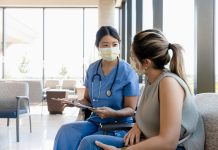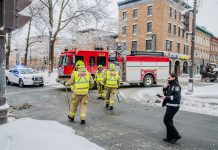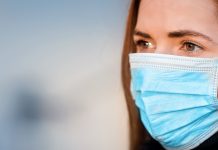Open Access Government produces compelling and informative news, publications, eBooks, and academic research articles for the public and private sector looking at health, diseases & conditions, workplace, research & innovation, digital transformation, government policy, environment, agriculture, energy, transport and more.
Home 2025
Archives
Digital disparities: Tech solutions for indigenous communities
Dr Dianne Wepa reflects on a study detailing the experiences of Māori kaumātua, who utilised digital technology to address health needs during COVID-19. It highlights challenges, resilience, and strategies for maintaining connections, emphasising the importance of digital technology in disaster management and the need to address digital disparities.
Teen relevant and open access health information for building vaccine confidence
With the abundance of health information about vaccines online, there is a need for an open educational resource (OER) that empowers youth to understand the importance of vaccines and make informed medical choices.
The future of AVS, dizziness, and vertigo in emergency departments Part IV: Priorities for...
In the fourth article of this five-part series, Dr Millie Nakatsuka discusses how reform must be integrated into the broader context of the public health landscape.
Persistent anti-vaxxers and pandemic-induced new anti-vaxxers
Read this analysis of persistent anti-vaxxers and pandemic-induced new anti-vaxxers by Fujio Toriumi, Professor at the University of Tokyo in Japan.
Learning from the COVID-19 Pandemic: Next-generation universal vaccines and immunotherapeutic research
With the COVID-19 pandemic behind us, we need to focus on universal vaccines and/or immunotherapeutic strategies and technologies to tackle ongoing endemic infections with SARS-CoV2, influenza, and RSV and prepare for any future pandemics, says Dr Babita Agrawal.
Building global health with lego vaccines
Prof Tuck Seng Wong and Dr Kang Lan Tee from the University of Sheffield, explain building global health with LEGO vaccines.
Beyond the numbers: COVID-19 data miscommunication
Prof Giampiero Favato and Cristina Oliva, MD, explain how storytelling shapes health behaviours beyond the numbers. Here, we learn lessons from COVID-19 data miscommunication.
Brain infection by SARS-CoV-2: Lifelong consequences
The WATCH team, founded to elucidate the role played by specialized brain cells called tanycytes in various physiological processes, has been investigating how and where the SARS-CoV-2 virus infects the brain, and some long-term consequences of this neuro-invasion.
Stress and coping during COVID-19
Marian Adriaansen and Henk Poppen from HAN University of Applied Sciences discuss their research on how Bachelor’s students in nursing coped with the impact of the COVID-19 pandemic.
Wastewater surveillance for infectious disease preparedness
The University of Oklahoma Wastewater Based Epidemiology (OU WBE) team highlights successes from their three years of wastewater surveillance in Oklahoma & how this surveillance approach can be used as next-level monitoring for infectious disease preparedness.
Post-pandemic MERS-CoV still presents risks
Darryl Falzarano, Research Scientist at the Vaccine and Infectious Disease Organization (VIDO), discusses potential solutions that are needed to tackle the coronavirus known as MERS-CoV.
Drug repositioning without the gene expression of disease cells treated with drugs
Y-h. Taguchi, Professor at the Department of Physics, Chuo University in Japan, provides comments on drug repositioning without the gene expression of disease cells treated with various drugs.
What has been the impact of Brexit on the UK economy?
Sarah Hall, University of Nottingham, discusses and assesses the impact of Brexit on the UK economy, in combination with COVID-19 and the Ukraine war.
What is the importance of friendship and mental health in pandemics?
Terence j Ryan, from the University of Oxford, explores the importance of friendship and mental health in relation to pandemics and immunity.
Acute care hospital reform in Japan: Outcomes in quality and market competition
This paper describes why the fee system for acute care hospital reform in Japan is beginning to show results.
The IDEA Model: A best practice for data-driven strategic risk and crisis communication
Professors of Strategic Communication Dr. Deanna D. Sellnow and Dr. Timothy L. Sellnow explore strategic risk and crisis communication using the IDEA Model, a theoretically grounded tool for effective communication.
Workers at risk: How do traumatic jobs affect essential workers?
R. Nicholas Carleton and Gregory S Anderson analyse the workplace stressors and risks of public safety personnel and front-line healthcare workers.
How entrepreneurship and industry saved COVID fighting nanotechnology?
Here Thomas J. Webster, Ph.D. explores how Nanotechnology was crucial in the battle against COVID-19 and how entrepreneurship helped it thrive.
Long Covid lessons: beyond winter and the COVID pandemic
Paying attention to Long Covid lessons is key: Long Covid has already provided lessons for other long-term conditions and planning for future pandemics far beyond COVID-19.
Open Science and Research Infrastructures provide the foundation and pillars necessary to tackle global...
COVID has highlighted the importance of Open Science and research infrastructures to accelerate the impact of scientific research.

